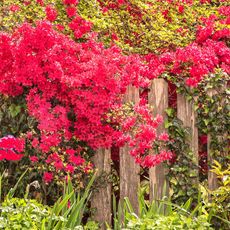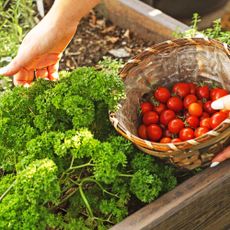What Is Geranium Edema – Treating Geraniums With Edema
Geraniums are age-old favorites grown for their cheerful color and reliable, long bloom time. They are also fairly easy to grow. However, they may become the victims of edema. What is geranium edema? The following article contains information on recognizing geranium edema symptoms and how to stop geranium edema.
What is Geranium Edema?
Edema of geraniums is a physiological disorder rather than a disease. It is not so much a disease because it is the result of adverse environmental issues. It also doesn’t spread from plant to plant.
It can afflict other plant varieties though, such as cabbage plants and their relatives, dracaena, camellia, eucalyptus, and hibiscus to name a few. This disorder seems to be most prevalent in ivy geraniums with large root systems compared to shoot size.
Symptoms of Geraniums with Edema
Geranium edema symptoms are first viewed atop the leaf as small yellow spots between the leaf veins. On the underside of the leaf, small watery pustules can be seen directly under the surface’s yellow areas. Both the yellow spots and blisters generally occur on older leaf margins first.
As the disorder progresses, the blisters enlarge, turn brown and become scab-like. The whole leaf may yellow and drop from the plant. The resulting defoliation is similar to that of bacterial blight.
Edema of Geraniums Causal Factors
Edema most likely occurs when air temperatures are lower than those of the soil combined with both soil moisture and relatively high humidity. When plants lose water vapor slowly but absorb water rapidly, the epidermal cells rupture causing them to enlarge and protrude. The protuberances kill the cell and cause it to discolor.
The amount of light and lack of nutrition combined with high soil moisture are all contributing factors to edema of geraniums.
Gardening tips, videos, info and more delivered right to your inbox!
Sign up for the Gardening Know How newsletter today and receive a free copy of our e-book "How to Grow Delicious Tomatoes".
How to Stop Geranium Edema
Avoid overwatering, especially on overcast or rainy days. Use a soilless potting medium that is well-draining, and do not use saucers on hanging baskets. Keep the humidity low by increasing the temperature if need be.
Geraniums tend to naturally lower the pH of their growing medium. Check the levels at regular intervals. The pH should be 5.5 for ivy geraniums (the most susceptible to geranium edema). Soil temperatures should be around 65 F. (18 C.).

Amy Grant has been gardening for 30 years and writing for 15. A professional chef and caterer, Amy's area of expertise is culinary gardening.
-
 Spectacular Early Blooming Shrubs: 6 Sparkling Spring Flowering Bushes
Spectacular Early Blooming Shrubs: 6 Sparkling Spring Flowering BushesWant to kickstart your gardening year with dazzling spring flowering bushes for beds and borders? These unique early bloomers are sure to help you rise and shine!
By Teo Spengler
-
 Best Herbs To Plant With Tomatoes: 6 Perfect Companions For Better Flavor & Bigger Harvests
Best Herbs To Plant With Tomatoes: 6 Perfect Companions For Better Flavor & Bigger HarvestsCertain herbs make excellent neighbors to tomatoes in the vegetable garden, repelling pests, keeping down weeds, and enhancing flavor. Try these top varieties.
By Mary Ellen Ellis
